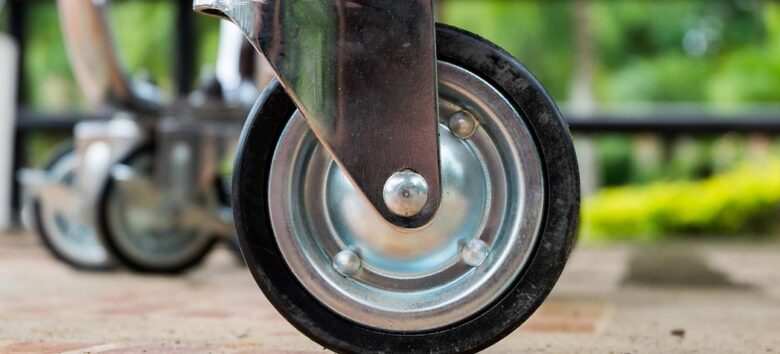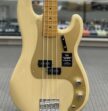Understanding Castor Wheels: A Guide to Choosing the Right Solution
Contents
Castor wheels may seem like a small component in the grand scheme of things, but they’re essential to the efficiency and functionality of countless everyday objects, from hospital beds to industrial trolleys. Castor wheels are designed to make heavy loads easier to move and to help equipment glide smoothly across various surfaces. Selecting the right type of castor wheel can make a significant difference, particularly in settings where maneuverability, load capacity, and durability are critical.
Here’s a closer look at castor wheels, what they’re made of, and how to choose the right one based on specific needs.
What Are Castor Wheels?

Source: aikchinhin.sg
Castor wheels are a type of wheel that is housed in a rotating mount, allowing it to roll and swivel in multiple directions. Unlike traditional wheels, castors are typically mounted to the bottom of an object or equipment, enabling it to move effortlessly, often with the ability to turn 360 degrees. They’re designed to reduce strain, simplify movement, and allow for versatile functionality across various industries.
Most castor wheels consist of three main parts:
- The wheel itself, which bears the load
- The mount or frame, which holds the wheel in place
- The swivel mechanism (in swiveling castors), which allows the wheel to turn in any direction
Types of Castor Wheels: An Overview

Source: item24.com
When it comes to castor wheels, one size does not fit all. Different environments and applications require different types of castor wheels, each with unique properties. Here are the most common types and where they’re typically used:
- Rigid Castors – These castors only allow for forward and backward movement, which is ideal for applications where controlled, straight-line movement is preferred, such as in some factory settings.
- Swivel Castors – Swivel castors offer 360-degree movement, which makes them a versatile choice for settings where maneuverability is essential, such as in hospitals or restaurants where equipment needs to be quickly and easily repositioned.
- Locking Castors – These castors come with locking mechanisms to secure the wheel in place. They’re common in areas where stability is crucial, such as on medical equipment or workshop trolleys.
- Brake Castors – Brake castors can halt the wheel’s rotation, often found in furniture that requires stability, like workbenches or shelving units.
Each type has its unique purpose, so choosing the right one can depend heavily on the specific demands of the environment it will be used in.
Materials and Durability: What to Look For
The choice of material for a castor wheel can significantly impact its performance, durability, and suitability for different floor types. Let’s break down the common materials used in castor wheels and what they’re best suited for:
- Polyurethane Castors – Known for their durability and quiet movement, polyurethane castors are ideal for indoor environments where noise reduction is beneficial. They’re gentle on floors, making them an excellent choice for hardwood or tiled surfaces.
- Rubber Castors – Rubber provides a smooth, quiet ride and is often used in hospital or office settings. These wheels are gentle on floors and absorb shocks well, but they may wear out faster on rough surfaces.
- Steel Castors – Steel castors are extremely tough and best suited for industrial environments where heavy loads are involved. These castors can withstand high temperatures and rough surfaces, but they tend to be noisy on smooth floors.
- Nylon and Plastic Castors – Lightweight and affordable, nylon and plastic castors work well for lighter loads and are common in domestic applications. However, they may not be ideal for industrial use or surfaces that are uneven.
- Thermoplastic Rubber (TPR) Castors – TPR combines the benefits of rubber and plastic, offering durability and smooth movement on various floor types. They’re common in environments that require versatility, such as schools, offices, or shopping carts.
Load Capacity: Getting the Balance Right

Source: casterspecialists.com
One of the most important factors in selecting a castor wheel is the load capacity it can handle. Overloading castors can lead to premature wear and, in some cases, damage the floor or equipment. The load capacity of a castor wheel depends on its size, material, and construction.
Here’s a basic guideline for considering load capacity:
- Light-Duty Castors: Suitable for applications where load weights are minimal, such as in furniture or office equipment.
- Medium-Duty Castors: Often used in commercial kitchens, retail spaces, or light industrial environments.
- Heavy-Duty Castors: Ideal for industrial use, where heavy machinery or loads over 500 kg are common.
- By carefully evaluating the expected weight the castor will bear, you can avoid issues and ensure a longer lifespan for the castor wheels.
Wheel Diameter and Movement Efficiency
The diameter of the castor wheel plays a crucial role in the ease of movement. Generally, larger wheels are easier to roll and work better on uneven surfaces. For instance:
- Small-Diameter Wheels – These are best suited for flat, smooth surfaces and are common in environments like offices or homes.
- Medium to Large-Diameter Wheels – Large wheels provide better shock absorption and are often used in industrial and commercial settings where surfaces may be rough or uneven.
- Choosing the correct diameter can enhance the efficiency and ease of movement, making work smoother and reducing strain on those moving the equipment.
Floor Compatibility: Avoiding Unnecessary Damage

Source: amazon.com
Different floor types react differently to various castor wheel materials. Selecting a castor that’s compatible with the floor surface not only protects the flooring but also reduces wear on the wheel itself. For example:
- Hard Surfaces – Polyurethane or rubber castors are gentle on hard floors, such as tile or wood.
- Carpeted Surfaces – Wheels with a larger diameter or soft material like rubber help prevent snagging and ensure smooth movement on carpet.
- Rough or Uneven Surfaces – Steel or large-diameter castors are preferred for industrial floors or outdoor areas.






